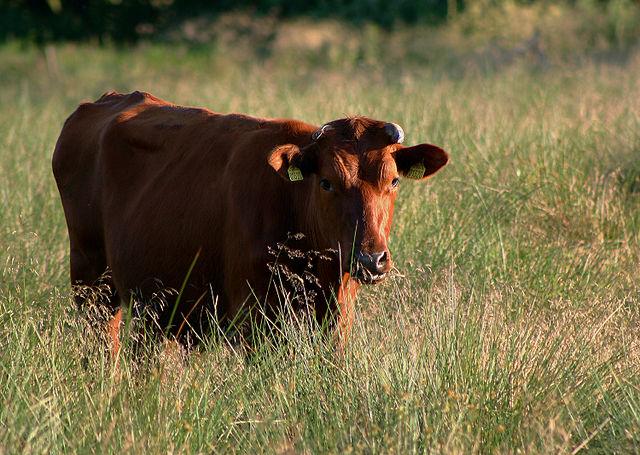
Researchers at Aarhus University in Denmark say they are close to developing a variety of grass species that are easier for cattle to digest. Should these grass seeds come to market in the next several years, scientists at the university’s Department of Molecular Biology and Genetics believe the global beef and dairy industries could take another step in mitigating their impact on climate change. In addition to creating less methane and carbon dioxide gas from cows, these grasses would be easier to digest and could actually boost milk production.
The university says it is partnering with the Dutch grass seed producer DLF to have these new grasses out to market in seven to eight years.
One of the largest factors that contribute to cattle’s impact on the environment is in their physiology. In addition to other ruminant animals such as deer, goats, sheep and camels, they have four compartments within their stomach instead of one. That largest compartment, the rumen, is where billions and billions of microorganisms allow cattle to break down the cellulose and other materials in grasses that other mammals, birds and humans cannot. This process, enteric fermentation, leads to the release of emissions -- especially potent methane gas -- when cattle “burp.” (Contrary to popular assumptions, the problem is not gases coming out of these animals’ other orifice.)
Despite the ongoing consolidation in Denmark’s agriculture sector, this small European country (which is about the size of Massachusetts and Connecticut combined) is, at last count, still home to over 1.1 million head of cattle. The result is that Denmark’s cattle emit at least 149,000 tons of methane annually. The research team at Aarhaus University says this improved grass could reduce all cattle-related greenhouse gases by a minimum of 10 percent.
And the greater the digestibility, the more milk can be produced. The Aarhus University team concluded that for each 1 percent improvement in the digestion of grass, a cow can produce an additional 250 milliliters (8.5 fluid ounces) of milk. Furthermore, this research suggests that each percentage-point improvement in total grass digestion also leads to a 1.5 percent reduction in methane emissions per head of cattle. To put this in broader numbers, a 10 percent improvement in grass digestion means cattle in the European Union would emit 1 million fewer tons of carbon dioxide annually.
Reducing emissions from cattle remains the holy grail for agricultural researchers as the world seeks a way to feed 9 billion people by 2050 without exhausting, or expanding upon, what little land is already available for farming and pastureland. Recently scientists suggested supplements in powdered form, with ingredients such as nitrates, could also improve digestion and overall food production from cattle while reducing greenhouse gas emissions.
Such an advancement would not only improve the environmental performance of established cattle producers such as the U.S., Canada, the E.U. and Australia, but also within countries that have seen in increase in beef and dairy production in recent years.
Other top 10 cattle producers in the world, such as Brazil, China, India and Mexico, are not nearly as competitive as their Western counterparts. As discussed during a recent conference hosted by the Global Roundtable on Sustainable Beef, the grasses fed to cattle in developing countries tend to have more cellulose and are of an overall lower quality. An improvement in how cattle are fed in these emerging markets would not only improve dairy and beef production, but would also help reduce emissions and the amount of land needed to raise these animals in a more affluent, and hungry, world.
Image credit: Malene Thyssen/Wiki Commons

Leon Kaye has written for 3p since 2010 and become executive editor in 2018. His previous work includes writing for the Guardian as well as other online and print publications. In addition, he's worked in sales executive roles within technology and financial research companies, as well as for a public relations firm, for which he consulted with one of the globe’s leading sustainability initiatives. Currently living in Central California, he’s traveled to 70-plus countries and has lived and worked in South Korea, the United Arab Emirates and Uruguay.
Leon’s an alum of Fresno State, the University of Maryland, Baltimore County and the University of Southern California's Marshall Business School. He enjoys traveling abroad as well as exploring California’s Central Coast and the Sierra Nevadas.














